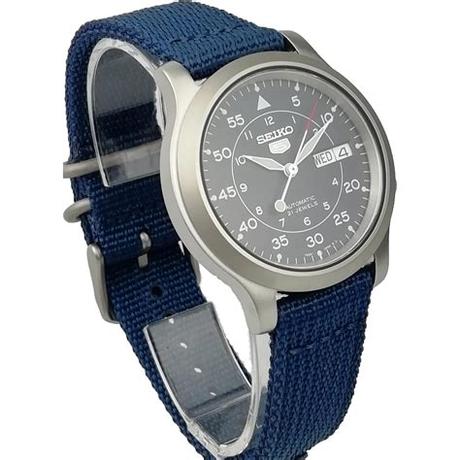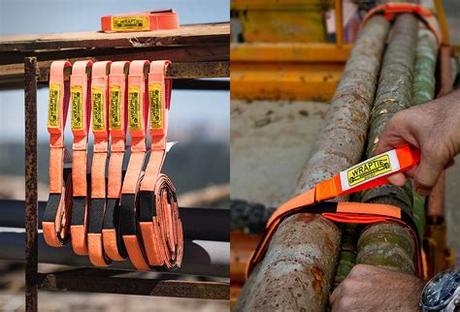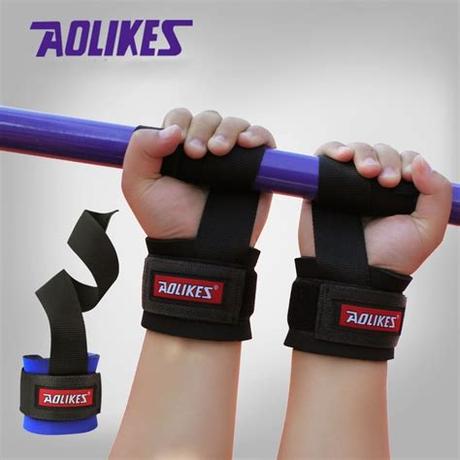
Strap meaning: a strip of material used to fasten or secure something, typically made of leather or fabric. Discover the various uses and types of straps.

The Importance of Understanding the Strap Meaning
When it comes to fashion, accessories play a crucial role in completing an outfit. One such accessory that has gained popularity over the years is the strap. From watches to bags and even guitars, straps are not only functional but also add style and personality to these items. However, understanding the meaning behind straps goes beyond just their aesthetic appeal. This article will delve into the significance of straps and how they contribute to the overall experience of using various items.

The Versatility of Straps
One of the remarkable aspects of straps is their versatility. They can be made from a wide range of materials such as leather, fabric, metal, or even rubber, depending on the intended purpose. For instance, leather straps are often used in watches to give them a classic and sophisticated look, while fabric straps provide a more casual and laid-back vibe. The choice of strap material can significantly impact the overall style and image associated with the item it is attached to.

The Functionality of Straps
Aside from their aesthetic appeal, straps serve a practical purpose by ensuring the secure attachment of items. For example, the strap of a bag allows individuals to carry it comfortably and keep their belongings safe. In the case of watches, straps keep them firmly in place on the wrist, allowing wearers to check the time conveniently. Understanding the functionality of straps is essential to make informed choices when selecting accessories or items that require them.

The Fashionable Appeal of Straps
Straps not only serve practical purposes but also contribute to the overall fashion statement of an individual. In the world of fashion, straps are often seen as an accessory that can elevate an outfit. Whether it's a belt strap cinching a dress at the waist or a stylish strap on a handbag, they add a touch of uniqueness and flair to any ensemble. Straps have the power to transform a simple item into a fashion statement, allowing individuals to express their personal style.

Straps in Sports and Fitness
In the realm of sports and fitness, straps are commonly used to enhance performance and ensure safety. For example, weightlifters often use wrist straps to provide additional support and stability during heavy lifts. These straps prevent the bar from slipping out of their grip, allowing them to lift more weight effectively. Additionally, sports watches with durable and sweat-resistant straps are favored by athletes as they offer comfort and reliability during intense physical activities.

Straps in Musical Instruments
Musical instruments such as guitars, saxophones, and violins often require straps to assist musicians during performances. These straps provide support and stability, allowing musicians to focus on playing without the worry of dropping their instrument. Additionally, instrument straps can be customized with various designs and materials, reflecting the musician's personality and style. Straps in the world of music not only serve a practical purpose but also become a part of the artist's visual identity.

Strap Meaning in Technology
In the realm of technology, straps have found their place in wearable devices such as smartwatches and fitness trackers. These straps not only secure the device to the user's wrist but also house various sensors and components necessary for tracking health-related data. The strap material and design play a significant role in ensuring comfort, durability, and ease of use for the wearer. The integration of straps in technology showcases how this accessory has evolved to meet modern needs and enhance user experience.

Strap Meaning in Safety
Beyond fashion and functionality, straps also play a crucial role in ensuring safety in various contexts. For instance, seat belts in vehicles are essentially straps that protect passengers by keeping them securely fastened during travel. Similarly, safety harnesses and straps are used in construction and rock climbing to prevent falls and accidents. Understanding the importance of straps in safety is vital for promoting secure practices and mitigating potential risks.

Straps in Luggage and Travel
When it comes to traveling, straps are essential for securing luggage and making transportation more convenient. Suitcases and backpacks often come equipped with adjustable straps that allow travelers to comfortably carry their belongings. Additionally, luggage straps provide an extra layer of security by keeping the bag closed and preventing items from shifting during transit. Straps in the realm of travel ensure ease of mobility and protect personal belongings.

Strap Meaning in Tradition and Symbolism
In some cultures and traditions, straps hold symbolic meanings that go beyond their practical use. For example, in certain ceremonies or rituals, a strap may be used to bind people together, symbolizing unity or commitment. In other instances, straps may represent status, indicating one's rank or position within a group. Exploring the cultural significance of straps adds depth to their meaning and further enriches our understanding of these accessories.

Conclusion
From fashion to functionality, straps have become an integral part of our daily lives. Their versatility, practicality, and aesthetic appeal make them a significant accessory in various contexts. Understanding the strap meaning allows us to appreciate their importance beyond mere style, acknowledging their role in enhancing experiences, ensuring safety, and reflecting personal identity. So the next time you fasten a strap or admire one, remember the significance behind it.
Strap Meaning: An Exploration of Its Meaning and Usage in Various Contexts
Strap, a term with a rich history and diverse range of applications, has evolved to encompass multiple meanings across various contexts. This article aims to provide a comprehensive analysis of the term, delving into its definition, etymology, cultural significance, functional applications, psychological associations, symbolism in art and literature, technological innovations in strap design, evolution in sports and athletics, and its presence in music and entertainment. Additionally, it will explore sustainable materials and their potential benefits for a greener future.
Definition of Strap: An Exploration of Its Meaning and Usage in Various Contexts
When examining the meaning of the term strap, it is crucial to recognize its versatility. Typically, a strap refers to a narrow, elongated piece of material or leather that is used for fastening, securing, or supporting objects or body parts. However, the term extends beyond its literal definition, finding application in various industries and areas of human life.
Etymology of Strap: Tracing the Origins and Historical Development of the Term
The etymology of the word strap can be traced back to the Old English term stropp, which originally referred to a thong or a strip of leather used for binding or lashing. Over time, the term evolved and expanded its meaning to encompass a broader range of materials and uses. This evolution reflects the dynamic nature of language and the influence of cultural and technological advancements on terminology.
Cultural Significance of Straps: Examining the Role of Straps in Fashion and Symbolism
Straps hold significant cultural significance, particularly in the realm of fashion and symbolism. In the world of fashion, straps serve both functional and aesthetic purposes. They can enhance the fit and support of garments, such as bras and backpacks, while also adding decorative elements to clothing and accessories. Furthermore, straps have symbolic connotations, representing connection, restraint, or liberation, depending on the context in which they are used.
Functional Applications of Straps: Analyzing the Practical Uses and Advantages in Different Industries
The functional applications of straps span across various industries, including transportation, manufacturing, and healthcare. Straps are commonly used to secure cargo during transportation, ensuring safe and efficient delivery. In manufacturing, they play a vital role in holding components together, providing stability and structural integrity. In healthcare settings, straps are utilized for immobilization, support, and patient safety, such as in the use of medical braces and restraints.
Psychological Associations with Straps: Understanding the Impact of Straps on Human Behavior and Perception
The presence of straps can evoke psychological associations and impact human behavior and perception. The feeling of being securely strapped in can instill a sense of safety and confidence, promoting positive emotions and reducing anxiety. Conversely, straps used as restraints may evoke feelings of discomfort or restriction, influencing one's perception of freedom and autonomy. Understanding these psychological associations is essential in designing products that cater to individuals' emotional well-being.
Symbolism of Straps in Art and Literature: Exploring the Deeper Meanings and Interpretations
In art and literature, straps hold symbolic significance and are often employed to convey deeper meanings. They can represent bondage or captivity, symbolizing the constraints imposed by societal norms or personal circumstances. On the other hand, straps can also serve as symbols of strength and resilience, signifying the ability to overcome adversity. Their interpretation is subjective, varying based on the artist's or author's intent and the viewer's or reader's perspective.
Technological Innovations in Strap Design: Investigating Cutting-Edge Developments and Advances
The world of strap design has witnessed significant technological advancements in recent years. Innovations range from the development of new materials with enhanced durability and flexibility to the integration of smart technologies, such as sensors and trackers, into straps for monitoring purposes. These cutting-edge developments aim to enhance functionality, comfort, and user experience across various industries, including fitness, healthcare, and personal electronics.
Evolution of Straps in Sports and Athletics: Tracking the Transformation and Impact on Performance
Straps have played an integral role in sports and athletics, evolving alongside the changing landscape of competitive activities. From the traditional leather straps used in early sporting events to the advanced elastic straps and harnesses utilized today, these innovations have significantly impacted performance and safety. Straps provide support, stability, and injury prevention, allowing athletes to push their limits and achieve optimal results.
Straps in Music and Entertainment: Assessing the Aesthetic and Performative Elements
In the realm of music and entertainment, straps serve both aesthetic and functional purposes. Guitar straps, for instance, not only allow musicians to comfortably hold their instruments but also contribute to their stage presence and visual identity. Similarly, straps are utilized in the performing arts, such as in aerial acrobatics or theatrical performances, where they enable performers to execute intricate movements and stunts with grace and precision.
Sustainable Materials and Straps: Evaluating the Eco-Friendly Alternatives and Benefits for a Greener Future
As society places increasing emphasis on sustainability, the exploration of eco-friendly alternatives for strap production becomes essential. Manufacturers are actively seeking sustainable materials, such as recycled fabrics or plant-based fibers, to reduce the environmental impact of strap production. These materials not only offer benefits in terms of reduced carbon footprint but also promote a greener future by minimizing waste and supporting the circular economy.
In conclusion, the term strap encompasses a multitude of meanings and applications across various contexts. From its functional uses in industries such as transportation and healthcare to its symbolic representations in art and literature, straps have proven to be versatile and significant. Moreover, technological innovations, cultural influences, and sustainability considerations continue to shape the evolution and impact of straps in our daily lives. Understanding the diverse meanings and applications of straps allows for a deeper appreciation of their significance and potential for future developments.
Thank you for taking the time to visit our blog and explore the meaning of straps. Throughout this article, we have delved into the different contexts and connotations associated with this versatile accessory. By analyzing the various uses and symbolism behind straps, we hope to have provided you with a comprehensive understanding of their significance in our lives.
Firstly, we discussed the practical aspects of straps, highlighting their role in providing support and security. Whether it is the strap of a watch or a backpack, these simple yet essential components ensure that our belongings stay in place and that we can rely on them in our everyday activities. Additionally, we explored how straps are used in the medical field, such as the straps on a blood pressure cuff or a patient's wristband, which serve to monitor and protect our health. Through this examination, we have seen how straps contribute to the functionality and reliability of numerous objects and tools we encounter in our daily lives.
Furthermore, we examined the symbolic meanings attributed to straps in various cultural and social contexts. From the representation of power and authority in military ranks to the expressions of fashion and style, straps often hold deeper meanings beyond their practical use. They can signify social status, group affiliation, or even act as a form of self-expression. By exploring these symbolic associations, we begin to understand how straps become intertwined with our identities and the messages we convey through our choice of accessories.
In conclusion, straps are much more than mere fasteners or decorative elements. They play a vital role in ensuring the functionality and reliability of our belongings, while also carrying significant symbolic meanings. Whether we are securing our belongings or expressing our individuality, straps are an integral part of our lives. We hope that this article has shed light on the diverse and fascinating aspects of straps, and we invite you to continue exploring our blog for more intriguing topics.
